A general thought in the fitness world is that Calisthenics/bodyweight training is the more natural method for practicing fitness. But for a long time, people have been lifting heavy weights for fitness purposes. So the question arises, which one is better, bodyweight training or weight training?
The truth is, none of them can be better if done alone unless you have any specific target like gaining more muscle mass, slimming, fitness only, etc. Combining both approaches will be more beneficial. There is nothing wrong with doing so.
Calisthenics alone can be beneficial for achieving a nice physique, but it will not build a huge bodybuilder’s physique it will build you a lean sexy gymnastic physique. You can find many decent good-looking physiques built by doing calisthenics only. But when it comes to building a muscular body, lifting heavy weights is more effective because you can influence strength, volume, and mass. Whereas, with calisthenics, you have to depend more on your muscle development from mostly muscle strength. So, when you intend to have a muscular body with ultimate strength, speed, and stamina then a combination of both approaches would be the best idea.
Here I am going to share some advantages of combining Calisthenics and Weight Training and also the possible disadvantages of doing it wrong. Furthermore, I will tell you what to do and how to do it.
“Train your body with focused attention on calisthenics and weight training. It will reward you with strength, beauty, and conviction’’
ADVANTAGES OF COMBINING BOTH METHODS
1. Flexibility and Strength
Calisthenics is intended to increase body strength, fitness, and flexibility with different body movements. Whereas, weight training helps enhance the size and quality of skeletal muscles. Combining both methods in harmony gives you flexibility and strength at the same time.
2. Agility and Stamina
By lifting heavy weights at the gym, you trigger your fast-twitch muscle fibers. This helps you in developing speed and power. Calisthenics can provide the benefits of muscular and aerobic conditioning. You activate slow-twitch muscle fibers, which help to increase your stamina.
3. Relaxation
In order to combine both methods, you have to be mentally prepared before each workout. Every time you lift heavy weights, it helps you control aggression. On the other hand, Calisthenics postures make you sweat and help you to feel relaxed. This helps in getting rid of stress.
4. Exercise of body and mind
A balanced combination of both methods is not only beneficial for physical strength but it also provides you with good mental health. Combining both methods keeps you active throughout the day and increases your self-confidence.
5. Maintenance
Weight training improves your metabolism, which helps in losing weight, increases bone density, and helps in maintaining joint flexibility. Whereas, Calisthenics gives you a better look in terms of body shape and muscular harmony.
DISADVANTAGES OF COMBINING BOTH METHODS
As I mentioned earlier, both methods should be combined in a balanced way. HARMONY should be kept in mind. If not, you might be overtrained from doing too much intensity, volume concentration, and/or frequency of one type of exercise.
1. Doing Excessive Calisthenics
Most of the bodyweight exercises are compound or wholesome exercises. It’s difficult to find exercises that only work on specific muscles.
If you are reducing fat, your body gradually has less resistance and muscle mass, therefore it does not grow in equal proportion to strength. (e. g. You do not gain 5 pounds of muscle mass for each additional 5 pounds you lift on average). To increase resistance you have to perform progressively more stimulating varieties of exercises for each muscle group.
2. Doing Excessive Weight Training
Don’t be over-confident. You must slowly ease into adding weights to your calisthenics exercise. . You can do 50 sets of overhead press and triceps push-downs, but there’s no guarantee that you can do a single handstand pushup. You must keep complete control of your body during your workouts or you may pull or even tare some muscles in your body.
Using heavy weights when you aren’t ready will always result in injury to that specific part of your body. Another drawback of excessive bodyweight training is that you lose flexibility and get an uneven or disproportionate body shape.
3. Workout At Your Own
Although combining both methods is beneficial if done in a proportionate way it requires proper knowledge, guidance from a trainer, proper machines, timings etc. Otherwise, chances are there that you might get hurt or get some internal or external injury
If your goal is hypertrophy then basic barbell and dumbbell exercises can be the easiest way. However, calisthenics are also a great substitute for weight training. Combining heavy lifting for lower repetitions with bodyweight exercise for moderate and high rep ranges gets that job done well. Also, you can do modified planche pushups by loading up a barbell with weights.
2. Sport specific
Some exercises combining calisthenics and weight training are focused on sports-specific goals. Squats and 360 Squats Shin Rolls give leg strength, mobility of lower extremities, ground engagement, and tactical movement skills. Turkish Get Up and System Get up give Huge carryover to martial arts, tactical and sports applications.
DIFFERENT TECHNIQUES OF COMBINING CALISTHENICS AND WEIGHT TRAINING
Here are some other examples of how calisthenics and weight training can be combined:
1. Alternative Exercises
You can do it by doing two squat exercises in a week; one can be done with weighted tools and the other with bodyweight. You may apply this in different ways. For example; you can do three upper body-press exercises and the next day you can do bench-press, on third day kettle-bell presses, and then higher-rep pushups. This is how you can do three days’ workout with alternate exercises, one with bodyweight and two with weights.
2. Multiple Hard Workouts
Do heavy squats followed by bodyweight squats. Reverse order of the same can also be applied by that is a bit tough. Another example is Pullups. If you are doing pullups, then try the same technique with an amount of some weight on a lat pulldown machine. Increasing speed and amount of weight can also make your routine workout hard but before you do it, consult a coach. Bud Jeffries Twisted Conditioning is recommended in this regard.
3. Stick to the Basics
Consistency is the key to success. Don’t change the order and types of workouts frequently.
After doing a particular set of calisthenics and weight exercises, move to a new set, and after working on it for a specific period, try adding the previous ones (whether weight or bodyweight exercise) along with new sets. It’s better to keep working on basics from time to time. You will feel more strength in those exercises.
4. Mark Your Targets
Set your targets before going for a specific type of exercise. Don’t do random exercises at once. Decide what you want to achieve. Research what would be the most appropriate type of exercise in calisthenics or weight training and what should be the set of workouts for that. Once you achieve your goal then move towards the next.
5. Rock Climbing
The correct combination of Calisthenics and Weight exercises results in SSS i.e. Strength, Stamina, and Speed. In order to achieve three of them, don’t just go to the gym, workout at home or the park as well. You should try rock climbing. Rock climbing is an adventure sport where you need to build bodyweight to pull along with weight exercise. You get to strengthen areas that are normally neglected at the gym or your home routine. Low back work and overhead pressing can be a good combination for that.
6. Jumping
Jumping with a rope or without a rope helps in strengthening the muscles, and increases flexibility and stamina. For this purpose you can go for explosive-weighted exercises, for instance; front or back squat, it helps in building gross-motor strength which is required for jumping.
7. Push Ups
While moving towards more hard skills like handstand push-ups, weight training for scapular muscles and rotator cuff helps you to get strength and conditioning along with significant results. When you put a greater load on your muscles, it increases your strength, that’s how the muscle group generates maximum force.
First of all, choose one exercise and repeat it for a specific period of time until you get the required results. So, along with additional exercises, your main exercises would be back squats, handstand push ups, pull-ups and deadlifts. In two forms it is weight training and in the other two it is bodyweight training. This option is really workable. Another workable choice could be bent over rows, sprints, military press, and swings.
Coach Chandler Marchman shares three methods for you to combine bodyweight training and bodybuilding to get gains in strength, size, and explosiveness. See video below:
EXAMPLE OF THE STRUCTURED ROUTINE
I recommend the program designed by Coach Ryan Hurst. He suggests a combination of weights and calisthenics in three days per week program. Do the weight lifting session first for the most part and then move towards calisthenics. Make sure your legs don’t get neglected and the session is balanced. Going towards the next level, you can split it up into lower or upper workouts and here you have to increase one more day from 3 to 4.
As I have mentioned, set your targets, and make the right combination of calisthenics and weight training accordingly. In order to combine both methods, here is the sample routine subject on your particular goal. Incorporating weight lifting for low repetitions with calisthenics for mid-level and high-level rep ranges can be beneficial.
Day 1
- Single Leg Squats: 3 sets of 10 to 15 Single leg squats. Take the rest 60 to 90 seconds between the sets.
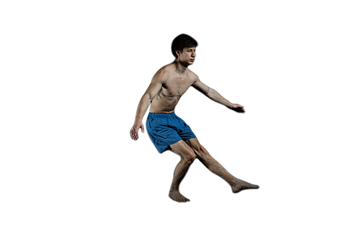
- Squats: 8 sets of 3 of Squats. Put the heaviest weight in the last set. Take rest for 2 to 3 minutes between each set.

- Handstand holds against the wall: 5 sets of 1 minute holds. Take rest for a minute between each set.
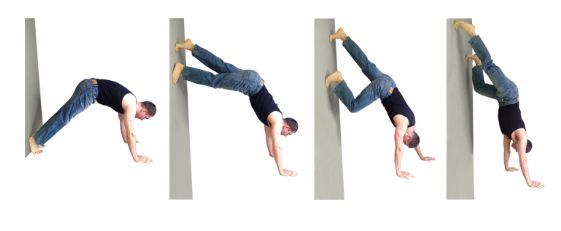
- Military presses: 5 sets of 5 Military presses. Put the heaviest weight in the last set. Take rest for 2 to 3 minutes between each set.
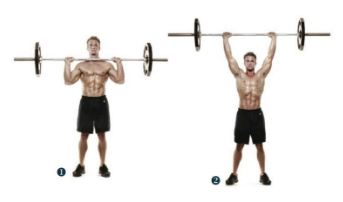
- Dumbbell curls followed by push-ups: 3 sets of 6 to 8 curls and max sets for pushups. Take rest for 2 minutes between each set.
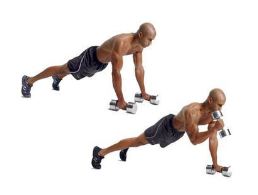
Day 2
- Bench presses: 5 sets of 5 bench presses. Put heaviest weight in the last set. Take rest for 2 to 3 minutes between each set.
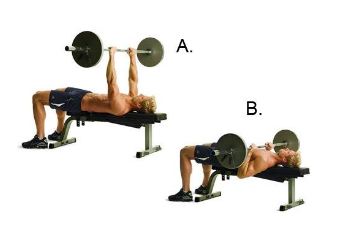
- Wide grip push-ups: 4 sets of 12 to 15 push-ups. Take rest for a minute between each set.
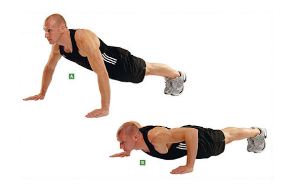
- Weighted dips: 5 sets of 8 dips. Use the same weight for all sets. Take rest for 2 minutes between each set.
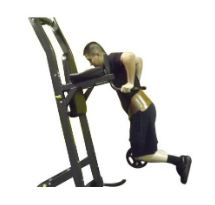
- Hanging leg raises, super-setting with jumps from full bottom squat position: 3 sets of 12 to 15. Take rest for 2 minutes between each set.
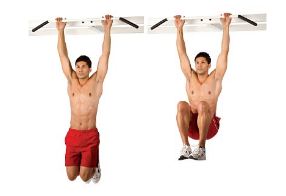
Day 3
- Deadlifts: 6 sets of 3 of deadlifts. Put the heaviest weight in the last set. Take rest for 3 minutes between each set.
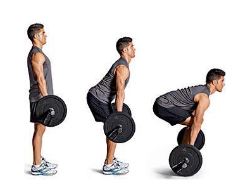
- Chin ups: 5 sets and repeats as much as you can. Take rest for a minute between each set.
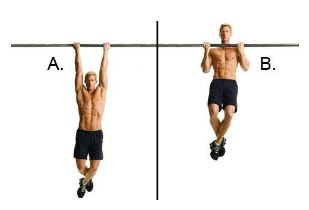
- One-arm dumbbell rows, super-setted with push-ups: 3 sets of 6-8 reps for the rows, and maximum for the push-ups. Take rest for 2 minutes between each set.
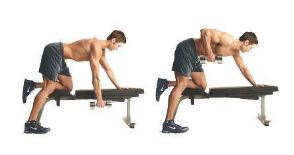
This program is beneficial to achieve hypertrophy. Order of exercises and Rep ranges are workable for your muscles to the max.
According to Kiro Gradovchanski, you can combine these two approaches in 2 ways:
1. Separate training
Separate training is something that I usually don’t like but maybe it’ll work for you. You are going for 1 week of weight lifting and one week of calisthenics. This way your body will get used to both kinds of training, but it will be longer.
2. Combined training
Combined training is what I actually like. Let me give you a 2 weeks training program of
what I’m talking about.
WEEK 1
Day 1. 2 sets of bodyweight decline push ups, 20 reps each. 2
sets of max weight dumbbells incline bench, max reps.
Day 2. 2 sets of bodyweight normal push-ups, 20 reps each. 2
sets for max weight barbell, flat bench, and max reps.
Day 3. Parallel bar dips- 3 sets of max reps
Day 4. Wide-fly push ups- 4 sets of max reps.
This is your first week of chest training. The second week is the same just with small modifications:
WEEK 2
Day 1. 3 sets of bodyweight decline push ups, 20 reps each. 1 set of max weight dumbbells, incline bench, max reps.
Day 2. 3 sets of bodyweight normal push ups, 20 reps each. 1 set of max weight barbell, flat bench, max reps
Day 3. Parallel bar dips- 3 sets of max reps
Day 4. 4 sets of dumbbell flyes on an incline bench
CALISTHENICS AND WEIGHT TRAINING; COMBINED BY DIFFERENT PROFESSIONALS
1. Max Shank
A renowned athlete and gymnast proposes that you should “own” your body movement, and need to be able to manage external loads while still being mobile, flexible, and stable when it counts. He believes that achieving Eventual Athleticism requires an equation of both sides i.e. mixing heavy weights with bodyweight.
2. Chandler Marchman
Says ‘’By using these 3 combined tactics of weight lifting and bodyweight training, you’ll be able to get the best of worlds, the maximal size and strength of bodybuilding, with the speed, explosiveness, and muscularity of bodyweight training’’.
3. Ryan Hurst
According to him, ‘’if your primary goal is building strong and functional muscle, using a combination of specific weighted exercise and bodyweight training could help you get there faster’’.
PUT INTO PRACTICE
I hope the given details will be helpful for you to go on the right path. Just be careful about the level of intensity, frequency, and volume of each exercise. Make sure you are not doing overtraining or undertraining and you make progress. The program you choose must include a balanced mix of calisthenics and weight training. Only in that way, you achieve your desired results.
So what are you waiting for? Combine both these wonderful workouts into your routine and get the best results!
Share your ideas and personal experiences. Don’t hesitate to ask any questions or contact me.

